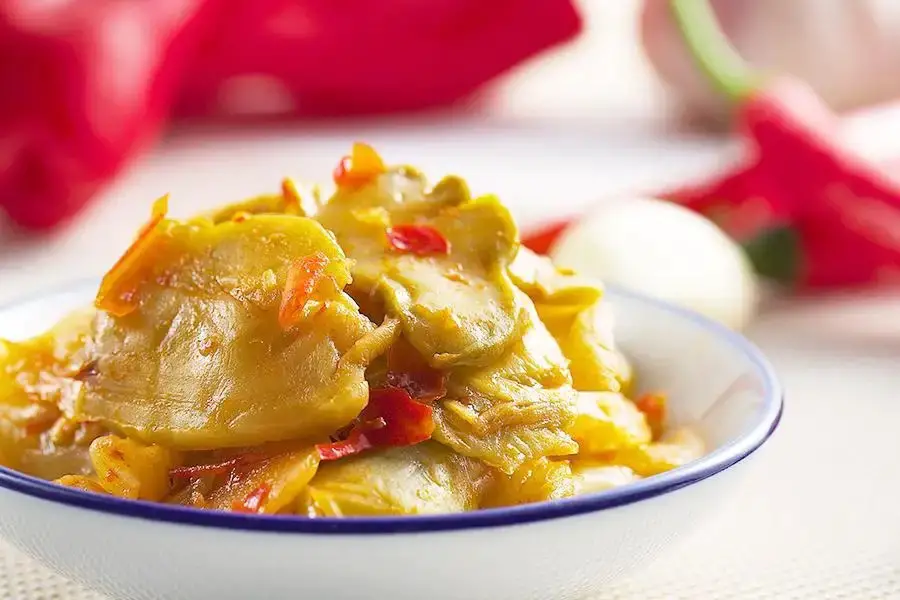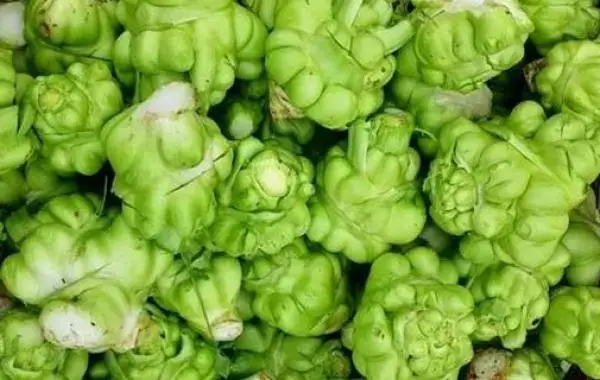Zha Cai is among the common dishes in China and can be eaten raw or used as an ingredient. In this article, I will explain where zha cai originated, what it tastes like, and how it is usually prepared.
What is Chinese Zha cai?

Chinese Zha cai is a type of vegetable found in China, also romanized as Cha Tsai, is a type of pickled mustard plant stem originating from Chongqing. and is widely used to add flavors to different dishes, acts as a garnish, or is even eaten when raw. The Zha cai can be described as a preserved stem of a mustard plant that is crispy and firm in texture. This vegetable, also famously known as the Chinese pickled vegetable or pickled mustard tuber, has a very salty flavor.
Zha cai history
This type of vegetable originated in Sichuan Province in China. Zha cai is made out of the stems of brassica juncea, subspecies tatsai, and manufactured in big numbers by a manufacturing company known as Fulling. Fulling company is located in Chongqing district in Sichuan province. The Zha chai dish is usually served in different Chinese cuisines and is also used as an ingredient in various foods. The Zha cai vegetables are a major staple food in Chinese households.
Zha cai come from?

Zha cai comes from the swollen stem of a mustard plant, and its origin is traced in Chongqing, a municipality in Sichuan area in China. Although it is widely served in Chinese households, this dish is becoming popular in non-Asian countries because of its unique taste.
What Does Zha taste like?
Zha cai vegetable taste will depend on which province in China it was prepared from. However, most of it combines salty, sweet, and spicy flavors. Due to the fermentation process, you can find other zha cai vegetables that have a little bit of sour taste.
Suan Cai vs. Zha cai
If you are new to these two, to help you know them better. It might be hard to differentiate between suan cai and the Zha cai. The table below will provide visible differences.
| Suan cai | Zha cai |
| It is soft and sour | It is crispy and salty |
| Manufactured from the leaf of a popular Chinese cabbage | It is manufactured from the stem of a type of mustard |
| Usually preserved by the process of lactic acid fermentation | Usually preserved by salt curing method |
| Usually used as an ingredient during cooking specific dishes | It can be eaten raw |
How to make Zha cai
Making Zha cai is easy, as it requires minimal strength and skills to carry out the procedure. The first step you need to do is to wash the knobby stem of the mustard and cut any rough patches it may have on its skin. The next step is to roll and sprinkle the stem with salt and then press until the Zha cai starts releasing the excess water in it. This will make sure that you remain with its juice only. After this process, the stem is washed and then dried. Hot chili paste or powder is rubbed all over the stem and packed tightly in a jar or pot for the fermentation process. You can refrigerate the Zha cai to extend its shelf life.
How to cook Zha cai
Zha cai can be eaten raw as pickles or cooked. To cook this dish, take out the amount of the stems you require from your jar or tin, and rinse the chili paste. Remove the excess salt in the Zha cai by soaking it for a minimum of thirty minutes in a cup of vinegar, white wine, or water. Cut the stems into small cubes or strips, and prepare them with your desired ingredients.
Conclusion
To ensure you get a well-prepared Zha cai dish, wash off the excess salt and chili powder to give it a traditional flavor. You can eat Zha cai raw or combine it with other dishes like noodles.